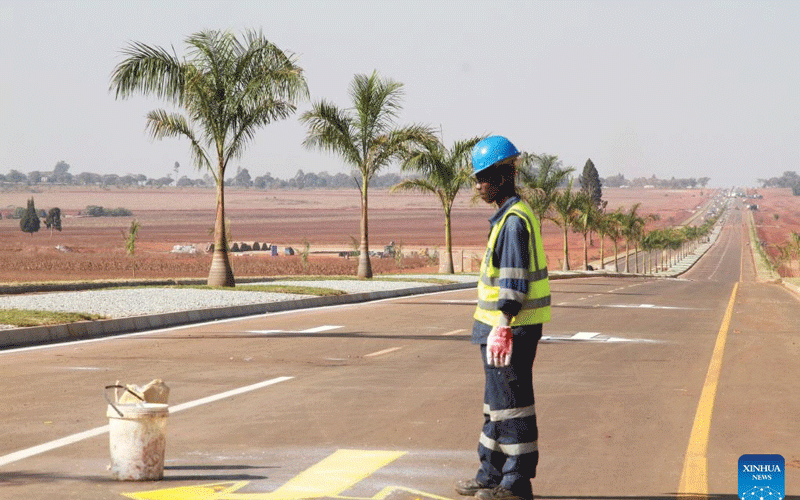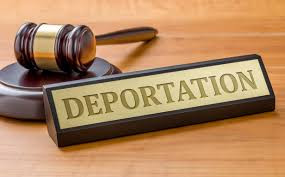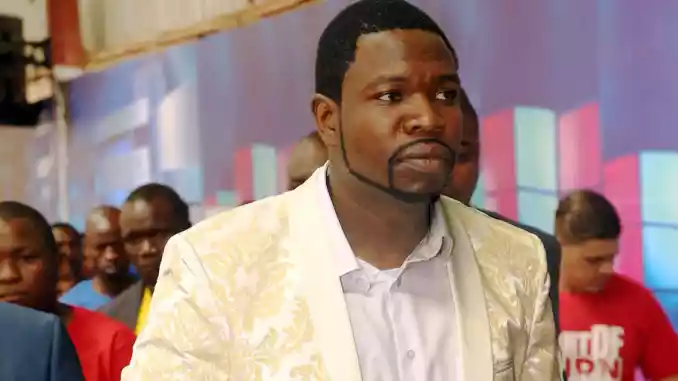
AS Harare hosts the 44th Southern African Development Community (Sadc) Heads Of State and Government Summit, the city is undergoing a dramatic facelift.
Roads are being resurfaced, flowers planted and the city is adorned with fresh coats of paint. On the surface, the transformation is presenting a vibrant and welcoming face to the world.
Yet, beneath the glossy veneer lies a nation grappling with deep-seated issues that no amount of beautification can conceal.
President Emmerson Mnangagwa's government has initiated a series of beautification projects in Harare to ensure the capital leaves a lasting impression on the visiting dignitaries.
In a move that has caught the attention of residents and visitors alike, palm trees have been planted along several major roads.
These trees, often associated with luxury and tropical beauty, now line streets like Nemakonde (Lomagundi) Way, bringing a fresh, green vibrancy to the city’s landscape.
The choice of palm trees is not just aesthetic; they are also symbolic of growth and stability, qualities that Zimbabwe is keen to showcase as it hosts this significant regional event.
Beyond the palms, several trees along the city's main roads have been given a fresh coat of paint.
- Sadc meets over water, energy and food security
- Opposition loses hope on reforms
- A regional approach is needed to address the electricity problem
- Anti-sanction music gala unites artistes
Keep Reading
This splash of colour is intended to create a more organised and clean appearance, contributing to the overall sense of a city being spruced up for a grand occasion.
The painted trees, mainly in a shade of white now stand out as markers of a city in transition.
Adding to the city’s new look are various artefacts that have been strategically placed at key points.
These pieces, reflecting Zimbabwe's rich cultural heritage, include sculptures of local wildlife, traditional Shona statues and other artistic creations that celebrate the country’s history and identity.
The artefacts serve as both a decoration and reminder of the nation’s deep cultural roots, offering a unique blend of modernity and tradition.
One of the most significant renovations has taken place at the State House, where the precast wall has been refurbished at a staggering cost of US$15 million.
The wall, which was showing signs of wear and tear over the years, has been reinforced and redesigned to match the grandeur expected of the residence of the Head of State.
The refurbishment has not only improved security but also enhanced the aesthetic appeal of the State.
However, critics say government efforts to spruce up the capital are not just about aesthetics — they are a calculated attempt to mask the underlying realities of a country in crisis.
Zimbabwe’s economy is on freefall, human rights abuses are rampant and political repression is at an all-time high.
While the flowers bloom and the roads gleam, the people of Zimbabwe continue to suffer under the weight of a regime more concerned with appearances than addressing the root causes of the nation’s woes.
Political analyst Rejoice Ngwenya said the Sadc summit had brought anguish to the masses.
“Ever since we were told Zimbabwe will host Sadc heads of State, our government has focused more on ‘presidential happiness’ than ours. Yes, we have new roads, but vendors, beggars and vagrants have been forcibly removed from the streets.
“Everytime Home Affairs minister Kazembe Kazembe opens his mouth, he threatens to beat us up. So far, no less than 200 innocent activists have been arrested and locked up,” Ngwenya said.
Another commentator Pardon Taodzera said Harare's beautification is a classic case of putting lipstick on a pig.
“It may offer a temporary illusion of progress, but it does nothing to address the systemic issues that have brought Zimbabwe to its knees,” he said.
“The government’s focus on cosmetic improvements reveals a deep disconnect from the daily struggles of its citizens, who are more concerned with putting food on the table than with the state of the city's sidewalks.”
Sipho Ndlovu, a 45-year-old street vendor in Harare, captures the sentiment of many, questioning government’s Harare makeover.
“They're planting flowers and fixing roads, but what about us? What about the people who can’t afford to eat? This is all just for show, to impress the foreign visitors. But once they leave, nothing will have changed for us,” he said.
Ndlovu’s frustration is echoed by countless others who see government’s efforts as a cynical ploy to distract visitors from the real issues.
Zimbabwe’s image on the international stage has been marred by years of economic mismanagement, corruption and human rights violations.
“No amount of urban sprucing up can erase the memories of State-sponsored violence or the images of opposition leaders being dragged to prison for daring to speak out,” Taodzera added.
Several embassies have voiced concern after State apparatus launched a clampdown on political activists perceived to be planning protests during the Sadc summit.
Police in June pounced on opposition Citizens Coalition for Change party supporters who were having a meeting at top party member Jameson Timba’s house in Avondale, Harare.
Seventy-nine opposition members were arrested including Timba and his son.
In July, police arrested 44 members of the Zimbabwe National Students Union at Zesa Training Centre in Belvedere, Harare, following the eruption of violence which resulted in destruction of property.
A fortnight ago, four local pro-democracy activists were pulled off a Victoria Falls-bound plane at the Robert Gabriel Mugabe International Airport and allegedly tortured following their abduction.
These are Namatai Kwekweza, Robson Chere, Samuel Gwenzi and Vusumuzi Moyo, while more than 200 people are currently in detention following their arrest across the country since June.








